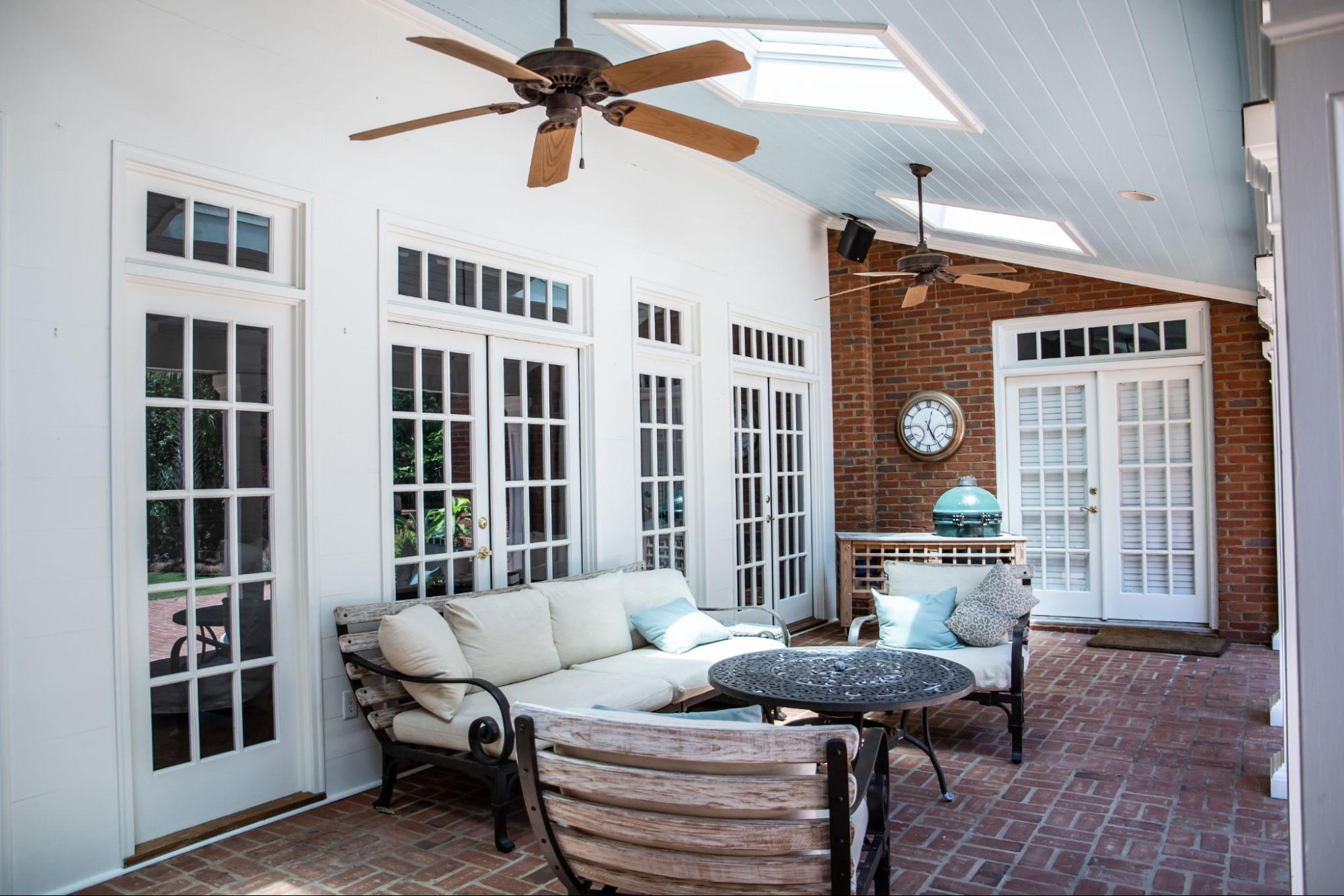Leading Brands



































To cope with the hot and humid climate, ceiling fans have been a staple in the Australian home for decades.
They have many benefits, including reducing your home’s energy and electricity consumption while also doubling as home decor.
Ceiling fans come in all shapes, sizes and designs, including pull cords, timer or aluminium and straight or curved, meaning there will be one that will complement the aesthetic of your home.
Here at Home Fires, we carry an extensive range of ceiling fans from Hunter Pacific, Mercator and Martec to suit a whole range of rooms and styles.
However, when it comes to finding the right ceiling fan for your space, the wide range of features and brands on offer can be overwhelming. That’s why we have put together this easy ceiling fan guide to help you make that decision, whether it be for comfort or home decor.
Although ceiling fans may now be obsolete in a few places around the world with the advancement in air conditioning, they still remain a simple and affordable source of respite from the hot and tropical climate of Australia.
The concept of the ceiling fan isn’t actually as recent as you may think either.
The ceiling fan dates back to as early as the Roman Empire, where human-powered palm frond ceiling fans existed.
In the 17th century, a similar type of fan known as the ‘punkah’, originated in India, where a palm frond or cloth-covered frame hung from the ceiling that moved when a servant pulled a cord.
The ceiling fan then moved from human power to the power of steam and turbine until German-American Philip Diehl changed the ceiling fan game forever in 1889 with the electric powered ceiling fan.
Moving now into the specifics of fans today, a ceiling fan doesn’t really reduce the space air temperature like an air conditioner but instead circulates the air inside the room by creating winds which create a cooling effect.
This means they can work alone or complement the use of an air conditioner by further circulating the cooler air.
As briefly mentioned already, the ceiling fan comes with many benefits, both for the home and for you. These benefits include:
Ceiling fans make for great additions in both your indoor and outdoor living spaces, so it is important to know which fan is the best fit for your space before installation by considering things like size and material.
Ceiling fans will be the most efficient when they are similar to the size of the room simply because the amount of air circulated by a ceiling fan is determined by its diameter.
This means the bigger the room, the larger the fan’s diameter needs to be for the most achievable comfort.
Small rooms like home offices and laundry rooms are ideal for smaller ceiling fans that range from 30 inches to 48 inches.
From our range:
Large rooms like living rooms, bedrooms and kitchens are ideal for medium ceiling fans that range from 48 inches to 54 inches.
From our range:
Great rooms like shared offices, open-concept living areas or lofts are ideal for large ceiling fans 56 inches or larger.
From our range:
Another thing to consider when installing an indoor ceiling fan is lighting.
If the living space has good natural lighting or ample light from other sources, a ceiling fan without lights is a good option. But don’t worry, if you would like more lighting in the future, many ceiling fan models are easily modified to install the lighting you require.
If you need a ceiling fan with already integrated lighting, make sure to look around for the lighting specifics that suit you. Many ceiling fan models with lights have the dimming ability so you can set the mood for any occasion.

Outdoor ceiling fans have become popular in recent years, being an efficient way to provide excellent cooling to patios and pergolas and also doubling as a way to keep the insects and mosquitos away.
Although outdoor fans can be used indoors, indoor fans cannot be used outdoors, so choosing the right one can be tricky.
By knowing how to look out for the following things, choosing your outdoor ceiling fan doesn’t have to be a difficult task.
From our range:

The ceiling fan concept is not a new one and with its efficiency and affordability, it remains a staple in the Australian home, with even more sizes and designs available today.
The ceiling fan can be used on its own, as home decor, and even as a way to complement the air conditioner to ensure your living space is as comfortable as possible.
When selecting an indoor and outdoor ceiling fan, aspects like the material, design and size must be considered seriously before installation. If not, your fan could be inefficient or easily damaged.
Simply contact us today to learn more about our wide range of ceiling fans to make sure you choose the right one for your living space.

A new fireplace makes your home a warmer and more comfortable place to live and can even increase its value.

Choosing the right ceiling fan can feel like a balancing act between functionality, affordability and aesthetics. You want a fan

There’s nothing like a storm to dampen your outdoor cooking and entertaining plans. But a downpour can not only stop



